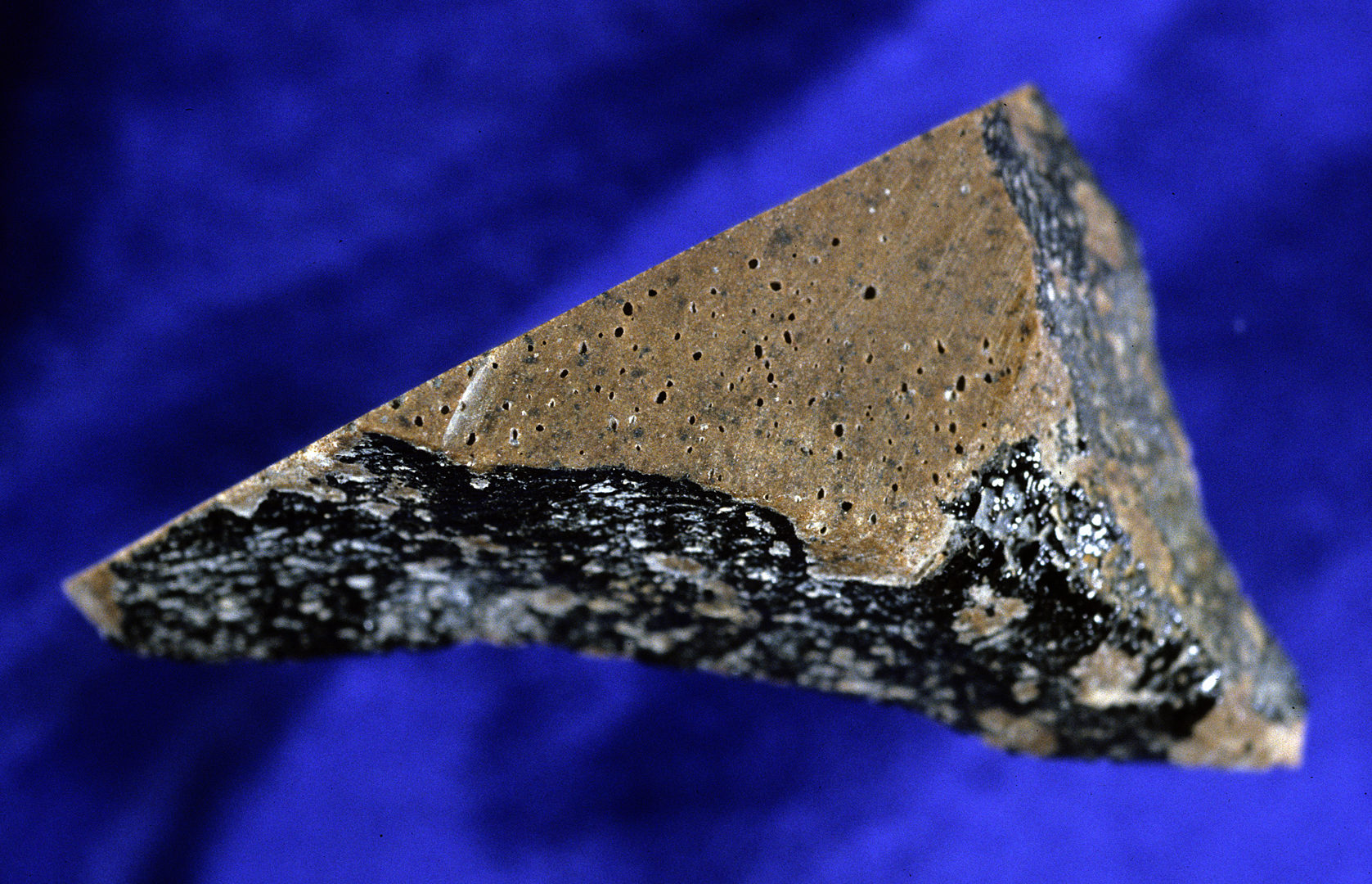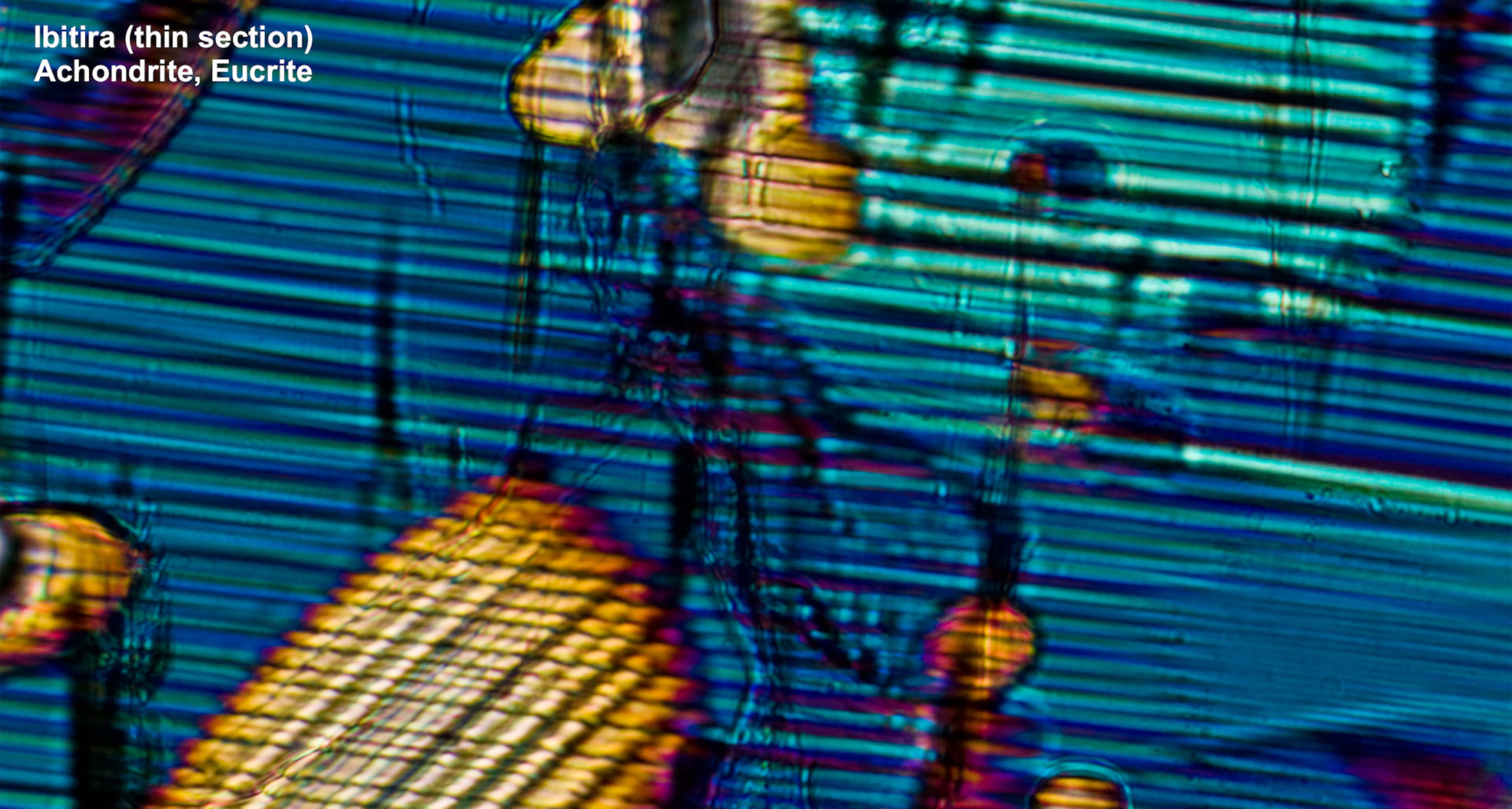Ibitira
Ibitira is an achondrite (Eucrite-mmict) that fell in Minas Gerais, Brazil, the evening of June 30, 1957.
According to the Meteoritical Bulletin (MB 6):
The fireball passed northwestward and accompanied with a noise like the reverberation of thunder has been observed. This phenomenon has been marked in the radius about 160 km. At the end point of the trajectory the fireball was broken up and disappeared at the height about 10 or 12 km above the earth’s surface. The meteorite was found near the predicted point of the fall, in the village Ibitira. It lay in a hole in the ground about 25 cm deep and 20 cm in diameter. The meteorite has a brilliant black crust, and a light brown.

In 2007, NASA launched the Dawn mission to study Vesta and the dwarf planet Ceres, and to provide insight into the formation and evolution of solid bodies in the early Solar System using a visible camera, a visible and infrared mapping spectrometer, and a gamma ray and neutron spectrometer. The extremely detailed images Dawn captured of Vesta's surface enabled the compilation of high-resolution global geological and tectonic maps of Vesta, published in the journal Icarus by a scientific team led by ASU School of Earth and Space Exploration Associate Research Professor Dr. David Williams.
Ibitira exhibits vesicles, which are a very rare occurence in meteorites given that most do not crystalize from a melt. Read more about vesicles in meteorites, here!
Only one piece of the Ibitira meteorite has been recovered, with a mass of 2.5 kg.
